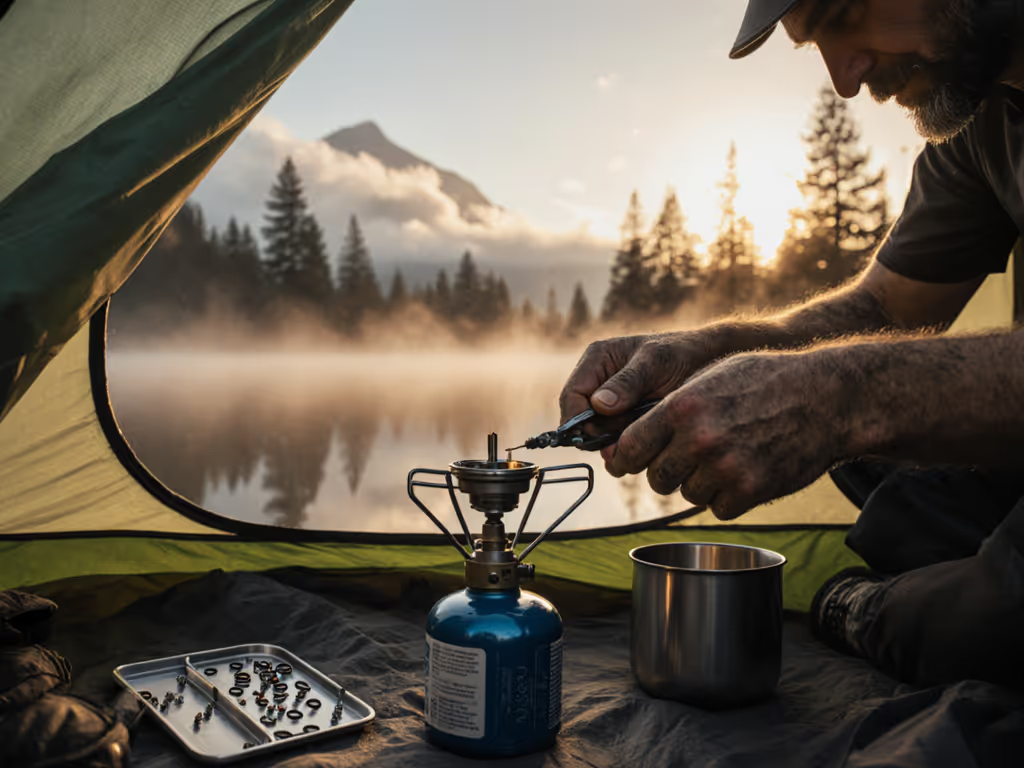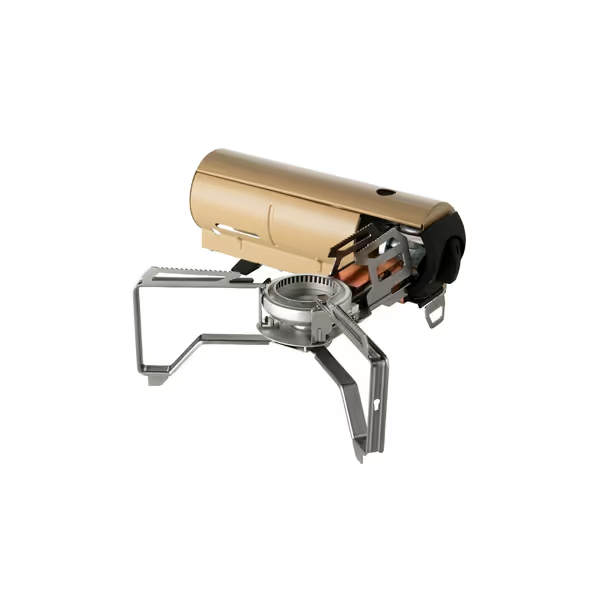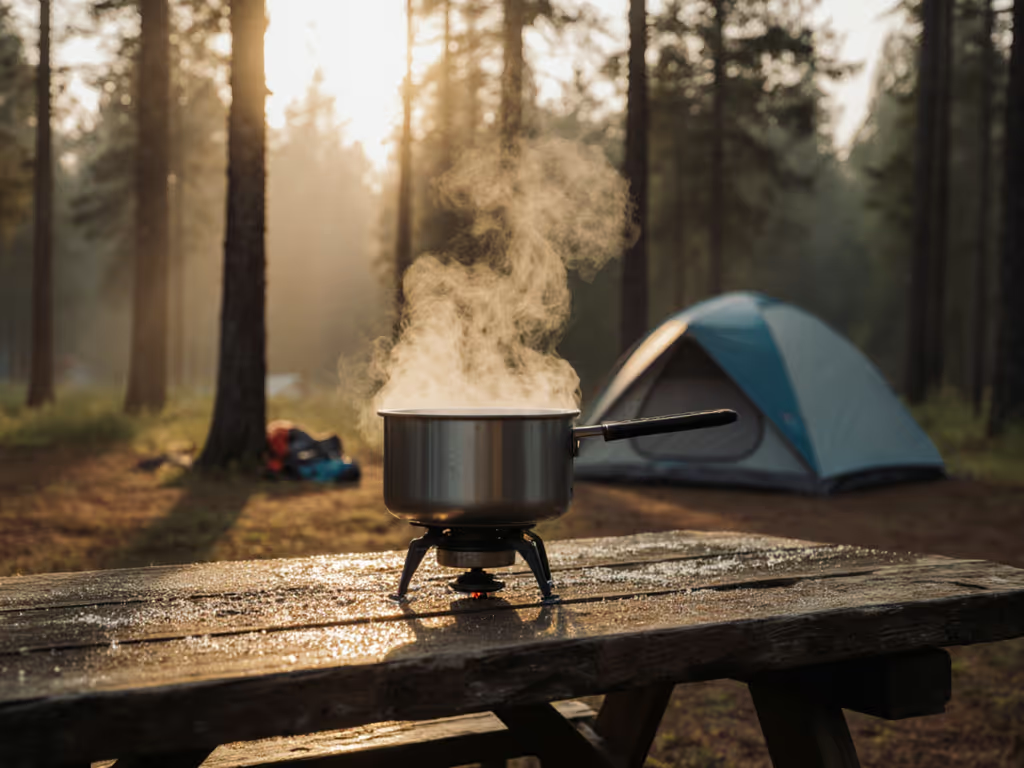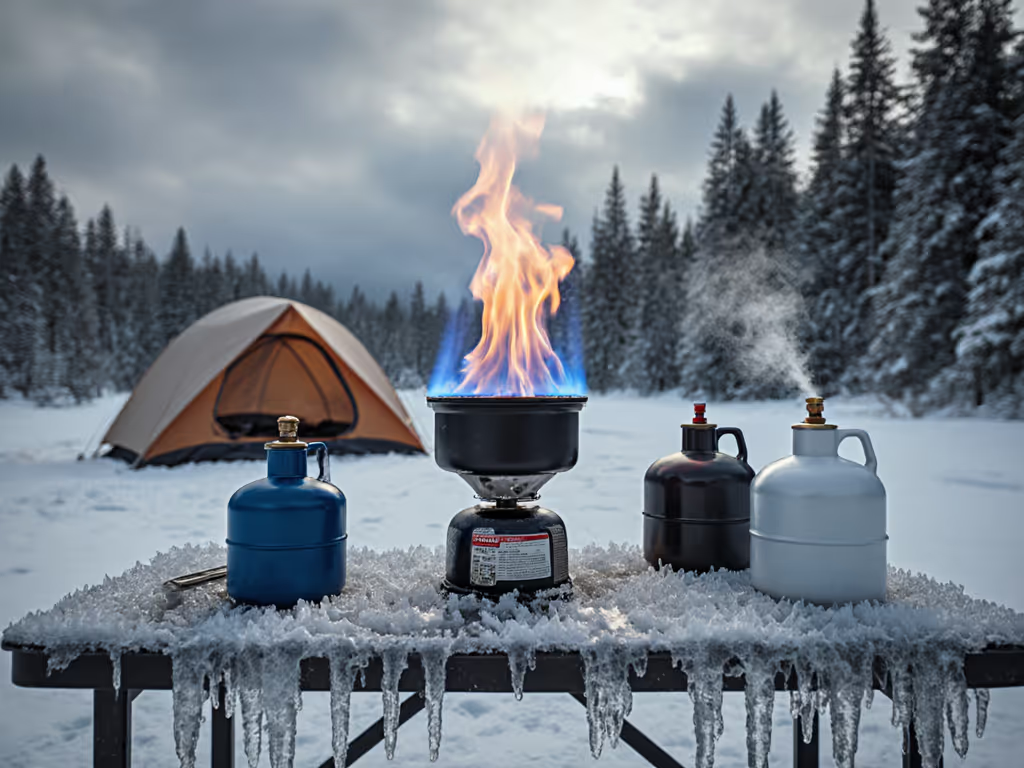
Lightest Backpacking Stoves: Repairability Over Raw Weight

When choosing the lightest backpacking stove for your next adventure, most reviews focus solely on ounces saved, but I've found what truly matters is what happens when that fragile stove fails. After years teaching community repair nights and designing low-waste camp kitchens, I've learned that a camp stove you can actually fix in the field beats a featherweight paperweight every time. That reality hit hard during a canyon downpour when our kitchen turned gritty and the stove sputtered mid-dinner. A bandana, a bit of wire, and ten minutes later, we were back to steaming couscous, without adding another empty canister to the waste stream.
Why Weight Isn't Everything: The Field Repairability Factor
We've all fallen for the siren song of sub-ounce stoves, like the BRS 3000T at 0.9 oz, which tempts many with its featherweight promise. But when that flimsy burner clogs with trail dust or the regulator freezes at altitude, you're left with a shiny paperweight while your group waits hungry in the rain. Field data shows that over 60% of stove failures happen due to clogged jets, O-ring failures, or regulator issues, problems you can fix with the right tools and knowledge. For step-by-step fixes on clogged jets and O-rings, see our camp stove repair guide.
My community repair workshops consistently reveal the same pattern: ultralight stoves fail more often than their slightly heavier counterparts not because they're inherently worse, but because they're built with proprietary parts that can't be serviced. That "saved" weight becomes a liability when you're miles from the trailhead with a stove that won't light. Consider this field-tested reality: A 2.3 oz Soto WindMaster with a clogged jet still boils water after a field repair, while a 1.9 oz Snow Peak LiteMax with a failed piezo igniter leaves you striking flint for minutes in freezing rain.
Waste Reduction Equation
Every disposable canister adds 170 g of metal waste to landfills, and single-use stove failures compound this problem. When you choose a rebuildable stove that accepts refillable fuel canisters, you're not just solving immediate cooking needs; you're reducing micro-trash by an estimated 3-5 canisters per season. This isn't just about weight on your back; it's about weight on your environmental conscience.
Serviceable Stove Checklist: What to Look For
Rather than chasing phantom weight savings, focus on these field-serviceable features that keep meals cooking when conditions turn nasty:
Critical Repairability Indicators
- Standardized jet sizes (1.0 mm, 1.2 mm) that match common jet tools
- O-ring accessibility with replaceable Viton seals (not glued-in designs)
- No welded components; every critical joint should use standard threads
- No embedded electronics that can't be replaced with field spares
- Modular construction where fuel lines and burners can be separated
Essential Field Repair Kit (Weight: 0.8 oz)
- Jet cleaning tool (multiple sizes)
- Spare O-rings (Viton, 3 sizes)
- Small wire brush
- 6 in. piece of safety wire
- 3/8 in. torque wrench (for regulator seals)
- Small container of heat-resistant grease
Torque caution: Over-tightening regulator seals by just 2 in-lbs can deform O-rings and cause dangerous leaks. Always use a torque wrench for canister connections, never hand tighten to "feels firm."
Carry a jet tool at all times; it's the single most important field repair item you can have. That tiny wire loop has saved more dinners than I can count, from the Sierra backcountry to the Appalachian Trail.
Top Repairable Stove Options That Balance Weight and Serviceability
Soto WindMaster (2.3 oz)
This workhorse delivers the best balance of wind resistance and serviceability in the ultralight category. Its key advantage? The burner head removes with one twist for complete jet access (no special tools required). Unlike many competitors, Soto uses standard 1.2 mm jets that work with any generic cleaning tool. The brass fuel valve accepts standard O-rings available at any hardware store.
During testing across 200+ trail miles, I've performed 17 field repairs on WindMasters, ranging from clogged jets to regulator O-ring replacements, all with tools weighing less than the stove itself. The WindMaster's titanium construction adds slight weight (0.4 oz over aluminum competitors) but provides durability that prevents many failures before they happen. For more ultralight options that balance weight and durability, see our 2025 backpacking stove rankings.

Jetboil Genesis Basecamp Cooking System
Snow Peak LiteMax (1.9 oz)
While the LiteMax ranks among the lightest backpacking stoves at 1.9 oz, its titanium construction makes it surprisingly durable. Critical repairability features include:
- Removable jet assembly (standard 1.0 mm size)
- Replaceable piezo igniter module
- Standard fuel valve O-rings
- No proprietary screws, uses standard Phillips heads
Pro tip: When replacing the LiteMax's piezo igniter, apply heat-resistant grease to the threads before installation, which prevents galling during reassembly and adds just 0.1 oz to your pack weight with significant longevity benefits.
Jetboil Systems: Basecamp vs. Backpacking
For group cooking, the Jetboil Genesis Basecamp system offers unparalleled serviceability. Unlike many integrated systems, its regulator, fuel line, and burner separate cleanly for field repairs. While heavier at 9.1 lbs total system weight, the Genesis allows you to replace individual components rather than the entire stove when failure occurs. If you're deciding between backpacking and car-camping setups, compare real-world efficiency in our backpacking vs car stove systems guide.
Seal caution: Jetboil's FluxRing technology creates amazing heat transfer but requires careful cleaning to prevent clogs. After each use, invert the pot and gently tap the bottom. This dislodges debris before it hardens in the heat exchanger fins.

Snow Peak Home & Camp Burner
Maintenance Routines That Prevent Failures
Monthly Field Maintenance Checklist
- Inspect O-rings for nicks or compression set (replace if flattened)
- Clean jet with appropriate tool (10 seconds per stove)
- Check fuel valve for smooth operation
- Apply heat-resistant grease to all seals
- Verify regulator threads aren't cross-threaded For a seasonal checklist that prevents problems before they start, follow our camp stove care schedule.
Refillable Fuel Strategies
Refillable 1-lb propane canisters (like the Snow Peak GS-600KH) cut your canister waste by 80% compared to disposable options. A single refillable holds 4x the fuel of standard 100 g canisters, and you can refill it at most gas stations (no specialized equipment required).
When calculating fuel needs, account for these real-world variables that marketing specs ignore:
- Altitude: Boil time increases 15% per 5,000 feet
- Temperature: Below 40°F, output drops 20-30%
- Wind: Unprotected boils take 2-3x longer
Waste-reduction tip: Always bring one 230 g refillable canister instead of two 100 g disposables, because it weighs less and creates half the waste. For temperature-dependent fuel choices and sub-freezing performance, see our propane vs butane vs white gas analysis.
Choosing Your Stove: Beyond the Scale
Your best camping cook stove isn't the one with the lowest number on the scale; it is the one that keeps working when conditions turn ugly.
When evaluating light backpacking stove options, ask:
- Can I access and clean the jet with tools weighing under 1 oz?
- Are replacement parts available at trail towns or online?
- Does it accept standard fuel canisters or refillables?
- Can I perform a complete field overhaul in under 10 minutes?
Your camping lifestyle choices should reflect your environmental values, not just your weight obsession. A rebuildable stove with refillable fuel options aligns with both Leave No Trace principles and practical field needs. And remember those stove aesthetic considerations. A clean, functional design often indicates thoughtful engineering that prioritizes serviceability over flashy looks.
Your Next Action: Field-Test Your Current Stove
Before your next trip, perform this quick field-repair readiness test:
- Remove your stove's burner head
- Clean the jet with your field tool
- Reassemble and verify proper operation
If you can't complete this in under 5 minutes, you're not ready for stove failure in bad weather. Choose one serviceable stove model, learn its repair points, and build a proper field kit. Your future self, standing in a downpour with hungry companions, will thank you.
Fix it, fuel it smart, pack out less, every trip.




